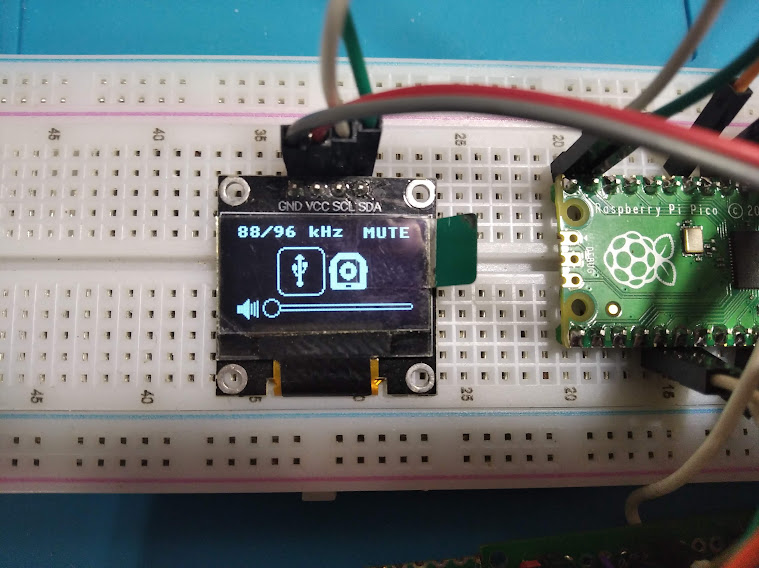Thanks a lot for the feedback, I'm happy you found this useful! :)
I originally intended the ESS_MUTE_FET pin to be able to mute the DAC if there was any popping when switching inputs or when powering on. Since that didn't happen it's unused and you can leave it disconnected and skip the FET.
You might want to keep R4 and C11 (100kR to VCC / 2.2uF to GND) on the mute pin as they act as a soft-start for any power-on pops. The FET was there as the DAC runs off of 3.6V as opposed to the 3.3V of the Pico.





 USB can also be connected with wires to the back wall, there are pads for soldering wires from the bottom of the Pico
USB can also be connected with wires to the back wall, there are pads for soldering wires from the bottom of the Pico Free space for toslink input and relay
Free space for toslink input and relay On the right is a free space under the TPA6130
On the right is a free space under the TPA6130
Thanks for an interesting project. Sounds good in my opinion. I changed the project a bit and used WM8804 (it will work by default too, you just need to switch to 1 TOSLINK). The device works like a USB Sound Card. The question is, how is the ESS_MUTE_FET pin connected to the MUTE pin of the ESS9023 DAC used?